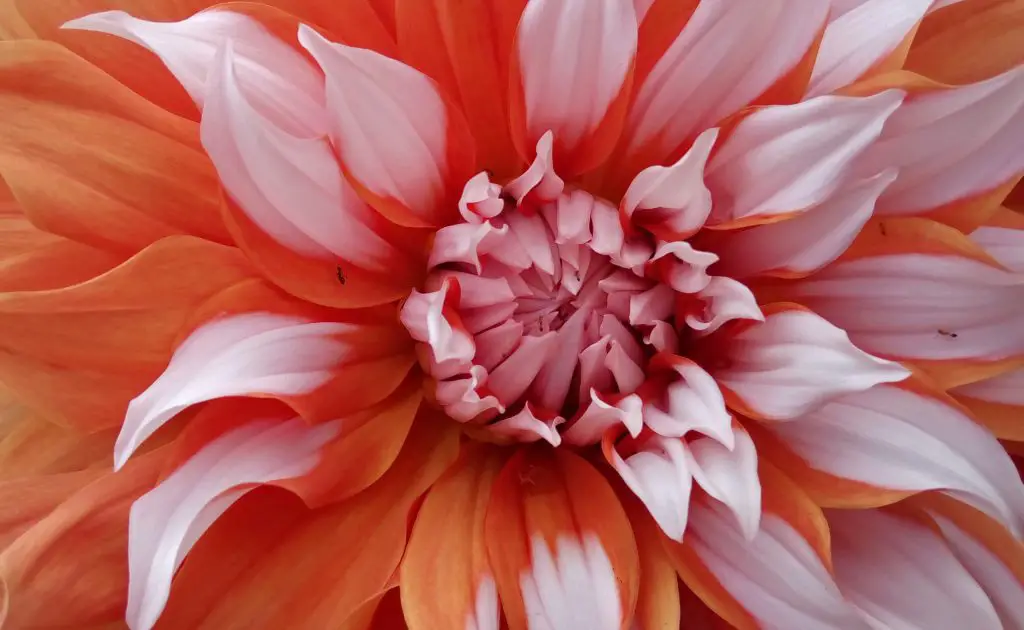Are Zinnia And Dahlias The Same Plant? Zinnias and dahlias are both popular herbaceous plants that are commonly grown in cottage gardens. They are both brightly colored flowers that come in a range of different shapes and sizes so are they just the same plant by a different name?
Zinnia and Dahlias are both genus within the aster (daisy) family. This means that the two flowers are a general term for two different groups of plants that contain well over 20 different species each. However, the two groups share the characteristic of producing compound flowers that contain many small flowers which is a defining feature of the aster family. An example of this is shown in the picture below.
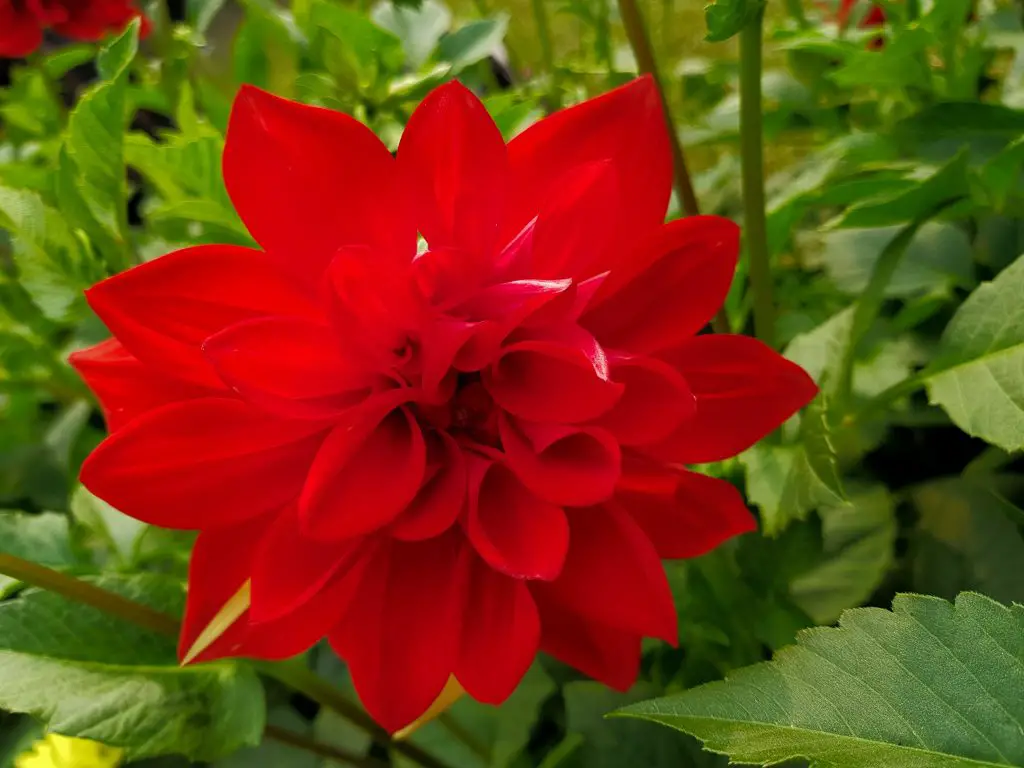
Other common features of the two plant groups are that they are both frost-sensitive flowers that originated in Mexico and the southern parts of the united states. They also produce large flowers on a single stem making most varieties suitable as cut flowers, however, they are not scented flowers.
One distinctive difference between the plants is that dahlias produce a tuber whereas Zinnias do not. The tubers were originally grown as a food crop by the Aztecs prior to the Spanish conquest. Attempts were made to introduce dahlias into Europe as a food unsuccessfully. With the fall of the Aztec empire, this practice largely died out.
The division of the tuber of the dahlia is now the most common way that gardeners propagate the plant, though seeds of some varieties are sold commercially. The presence of the tubers in the ground results in the plant returning year after year. This tuber can be left in the ground in zone 6 or higher provided that the ground is not too wet.
Zinnias can also come back each year, but via a different mechanism, they produce seed from spent flower heads that self sow. However, the rate of self-seeding is not as prolific as calendulas.
About Zinnias
Zinnias are a group of annual flowering shrubs that can vary in height from 4 inches to 3 ft in height. They produce flowers that have a distinct center. The petals are generally flat, though there are some exceptions to this, and they are arranged in single rows (similar to many daisies), multiple rows where the center of the flower is not always visible and they can also have a dome petal structure that is similar to the ball dahlias discussed later in the article.
The single and multi-row varieties are the types that most people generally associate with zinnias, as they are much more common that than dome varieties. The single petal varieties are easily confused with other members of the daisy family including some dahlias. An example of a double petal variety is shown in the image below.
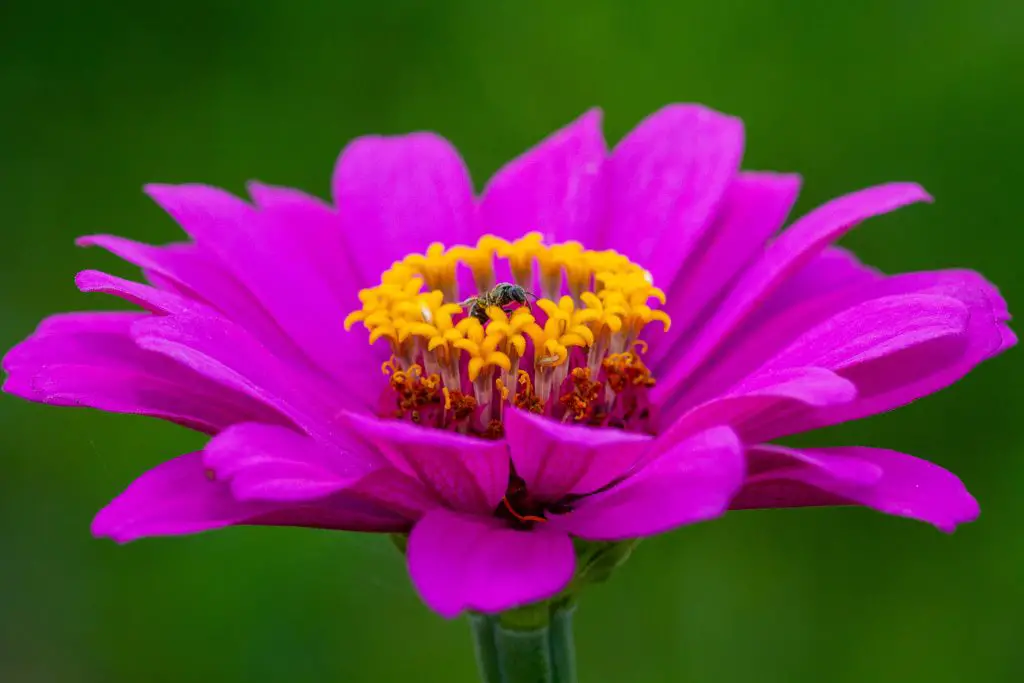
The dome petal structure encountered in some varieties is shown in the image below. This type of petal arrangement comes in a range of colors. Some of the common varieties within the group include ‘Benary’s Giant Orange’, ‘Cherry Queen’ (red), and ‘Uproar Rose’ (pink). To see the breadth of variety available I recommend visiting www.gardenia.net which has a huge selection of varieties with terrific images that give an excellent feel of what some of the varieties look like.
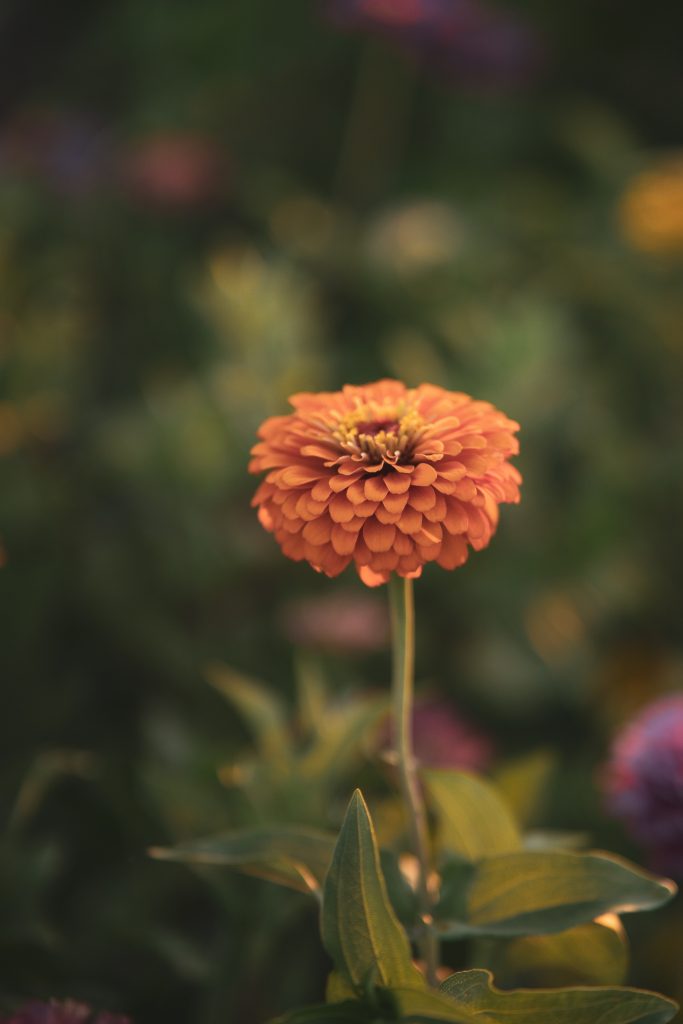
Unlike the Dahlias which grow from tubers, Zinnias are an annual plant grows from seed. In terms of growing conditions, Zinnias like dahlias, prefer a sunny location with rich moist soil that has plenty of nutrients.
The nutrients are required as Zinnias grow quickly from seed to flowering within a single growing season. To extend the period of bloom it is recommended that any spent flowers be deadheaded to encourage the plant to continue to bloom. The flowering period in most regions will continue until the first frost arrives, which will kill the plant.
About Dahlias
Dahlias were first discovered in the 1500s, since that time there have been 42 species of dahlia identified that contain numerous cultivars that continue to be hybridized to this day. Within this genus, there is a wide variety of flower types that vary in size from 2 inches to 1 ft in diameter (5 to 30cm).
Additionally, there is also great variation in the height of the plants varying from 1 to 8 ft (0.3 to 2.4 m) tall. This great variety within the dahlia genus is attributed to the increased number of chromosomes, dahlias contain 8 whereas most other plants have only 2.
The types of dahlia can be divided up into several groups based on the flower type,
Single dahlias
Single Dahlias flowers feature a single row of petals that are either completely flat or slightly cupped. The petals themselves usually overlap slightly as they approach the center of the flower. The center of the flower is usually a relatively flat disc with a ring of pollen going around the outside of the disc which is usually either yellow or orange in color. The center part of the central disc can vary in color from dark brown or black to orange or even yellow color depending on the specific varieties.
Common varieties include ‘Happy Single Romeo’ (red), ‘Happy First Love’ (orange), ‘Happy Single Party’ (yellow), ‘Magenta star’ (pink) and ‘Twyning After Eight’ (white). An example of a single dahlia is shown in the picture below.

Cactus And Semi Cactus Dahlias
Cactus and semi-cactus varieties have a star-like formation created by petals that are bent backward to form an apparently spiky appearance. However, due to the configuration of the petals, the flowers are more resistant to heavy rain and are less likely to be weighed down by the water. As a result of this, they usually required less staking than other varieties. Common varieties include ‘Doris Day’ and ‘Ryecroft Pixie’.
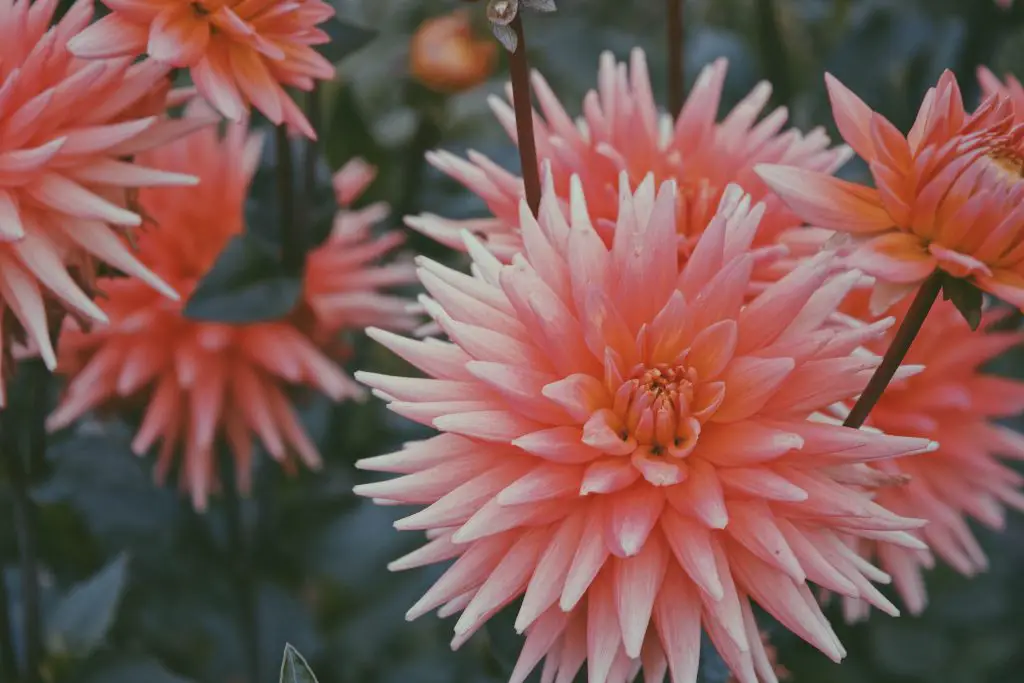
Semi-cactus dahlias have a similar appearance to the cactus varieties but the petals at the base are generally a bit thicker giving them a fluffy appearance, see the image below. Common varieties include ‘Dame Deirdre’ , ‘Pink Preference’ and ‘Vulcan’.

Pompon And Ball Dahlias
Pompon dahlias are a striking form of the plant that, as their name suggests, have spherical pompon-like flowers. This formation is created by the inward curvature of the petals which creates a symmetrical pattern. Ball dahlias are very similar in shape except that the dahlias have a slightly flattened top. An image showing the spherical pattern is shown below.
Pompon varieties generally have smaller flower heads compared to the ball varieties, 2-inch heads being common. Common varieties include ‘little William (red), ‘bantling’ (orange), and ‘Jan Van Schaffelaar’ (pink).
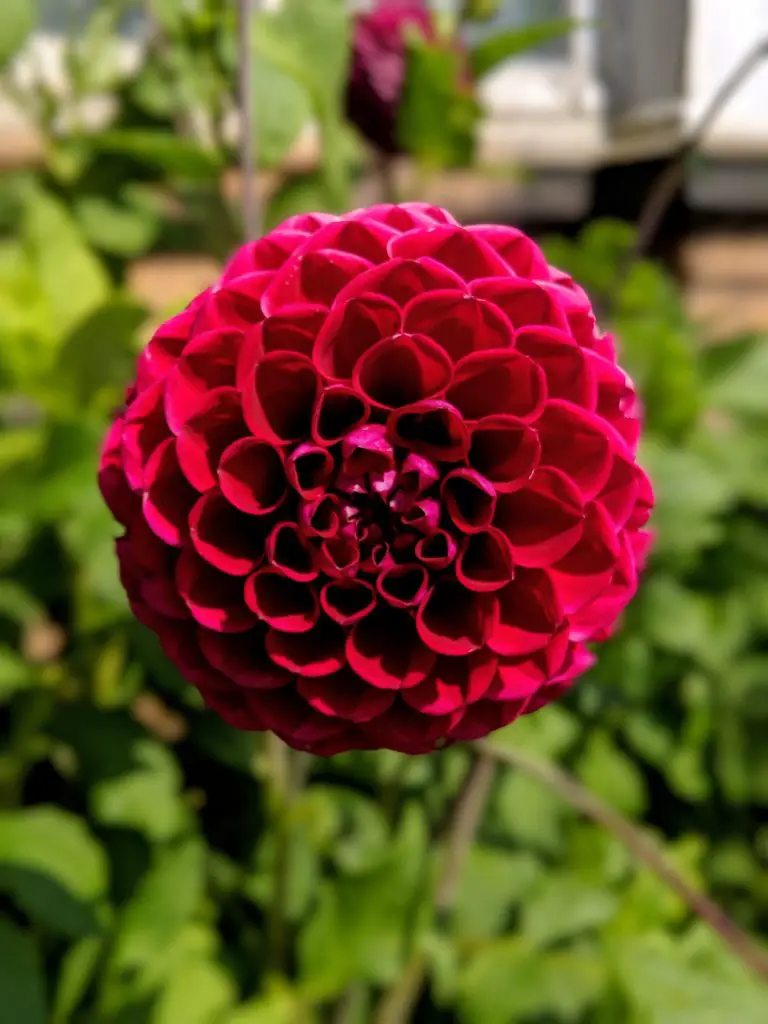
Waterlily dahlias
Water lily Dahlias are another type of flower, which as the name suggests is a type that resembles the classic waterlily. The flower head itself has double blooms with relatively broad petals that have a slight inward curvature and pointy tips that give it a distinctive structure and shape.
Due to the petals folding outward as they open, the period over which a flower looks good can be extended by progressively removing the outermost petals as they fade. A few common varieties include ‘karma Choc’ (dark burgundy), ‘Caballero’ (variegated yellow and orange variety), and ‘Priceless Pink’ (Pink).
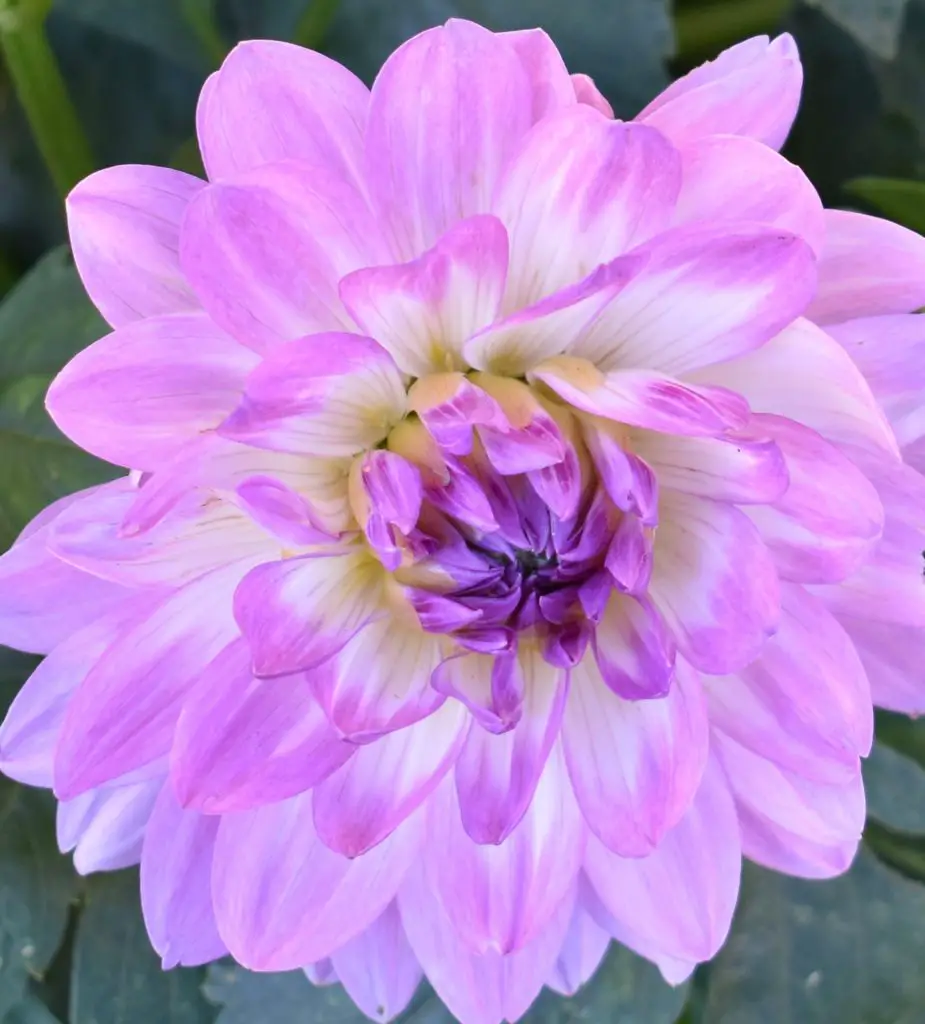
Anemone And Collarette Dahlias
Anemone and Collarette Dahlias are another type of flower that features a flat outer ring of larger petals that is surrounded by a mass of smaller central petals. The Collarette Dahlias are similar flowers that are small to medium in size. An example of this formation is shown in the image below. Common varieties include ‘Impression Fortuna’ (yellow), ‘Night Butterfly’ (deep red outer petals and white central ones), and ‘Que Sera’ (white flowers with a flick of purple).
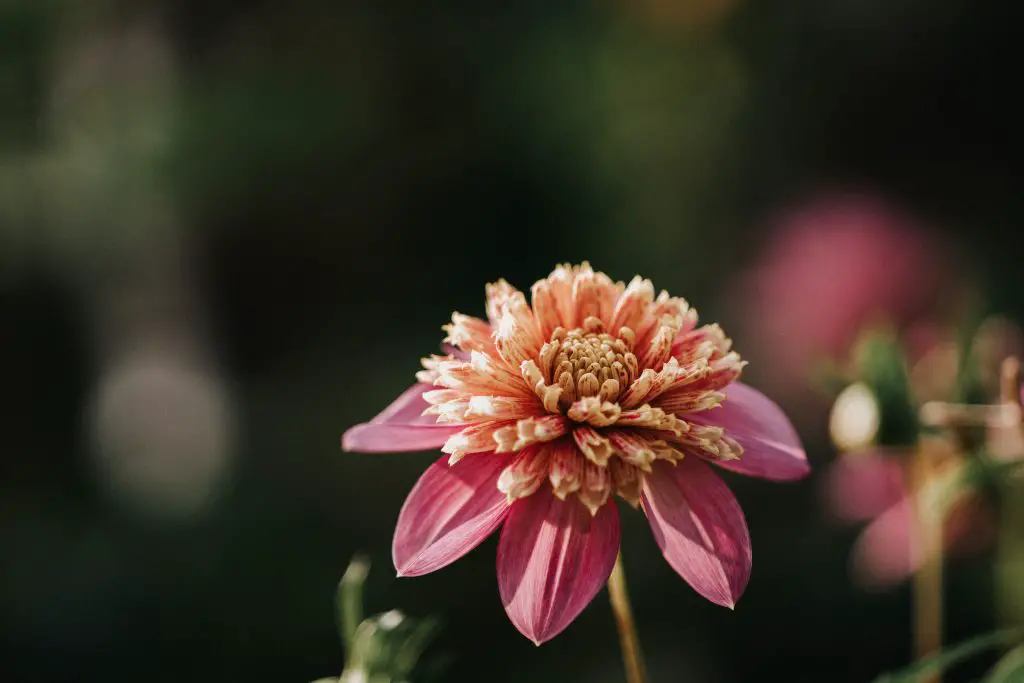
Decorative Dahlias
Decorative Dahlias are the varieties that generally produce the largest flowers of all the different types, typically producing flowerheads that are up to 10 inches wide, though there are exceptions to this. The decorative Dahlia varieties come in formal and informal flowers forms. The formal cultivars have broad flat pedals that are uniformly placed around flowers while the informal varieties petals, which are also relatively large, tend to have rolled or wavy tips in a less regular arrangement.
An example of the irregular ends of the petals is shown in the image below. Common varieties include ‘frost nip’ (apricot color), Kelvin Floodlight (yellow), and ‘Peaches and Cream’ (orange/yellow).
